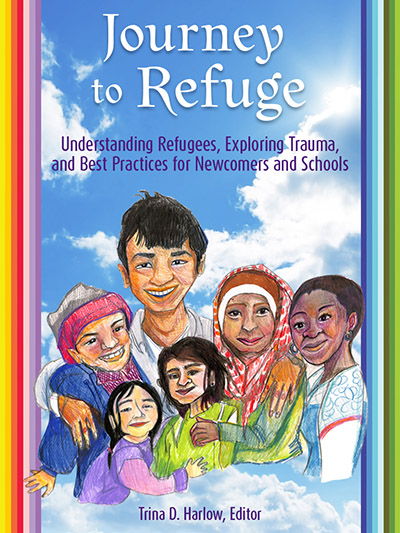Behind the Scenes: Refuge in the Heartland
An interview with Rusty Earl, the video producer behind the film Refuge in the Heartland.
Transcription:
Hey guys, we are cruising down the mall right now and hope to see something cool in the background. So a little behind the scenes for our making of our film. I have the short sequence showing you some of the filming we did in Washington D.C., in Toronto, as well as here in Wichita Kansas. We had a pretty unique opportunity to go back east and interview Dr. Jacqueline Bhabha who works at Harvard. She is probably the world-most authority on children on the move, which is this idea of kids immigrating across international lines as asylum seekers or as refugees. I had one day to fly out from Kansas City to film interviews with her and film around the mall and then get back that same day. So one of the funner things I got to do was rent a bike and film while riding around the Washington Mall. Filming up in Toronto – I was asked to go up there to a training conference for people that work in the refugee field, and while we were there we filmed in and around parks in a small community college and just the general area of Toronto, and because of that I filmed with a small light camera. So here I had a chance to get from Toronto itself to a small island and was able to spend part of the day filming time lapses. In general, when we were filming we used our larger camera. This is a VariCam LT. Got lots of interviews and most of our b-roll was filmed with this camera.
As far as interviews, most of the time it was just us talking with students, parents, and teachers. Although on a couple occasions we used a translator to translate Swahili into English for us, and here you can see some clips of us working with the interpreter to ask these two ladies about their experiences coming to Wichita. Finally, I would say as far as the behind the scenes, this was our first project working with a VariCam LT. While we were excited to use a professional cinema-grade camera we also realized fairly quickly that using a larger camera changed the dynamics of setting up in a room, as well as working with people and overcoming fears about being interviewed. For many years I've used small DSLR type cameras and those are frankly much more inconspicuous, and so it was interesting watching people's reactions to us setting up such a large camera. One final takeaway that I had from this entire project – when you're working with a group that has come to a country where they may or may not be fully welcome, safety for everyone is so important. We had from every child one, if not two, release forms. We worked with the teachers to make sure parents were fully aware of what we were attempting to do and we made a commitment that we would only use their first names in the production. Even then we had times where we were warned that certain people might be okay with being filmed but were unaware that it could cause dangers for people back home. Some countries, like Eritrea, there are issues where if people come over seeking asylum that it can put their families back home in danger and so something that was always in the back of our minds was checking to make sure that every kid that was filmed had a release form, that everyone was safe and their parents were aware of what was going on.
Our end goal with this project is to see that teachers across the country have a chance to watch the film. While many teachers may think they'll never have a refugee in the classroom, they will have students that have immigrated from other countries. They'll have situations very similar to those in the film and we hope this will become a lasting help, as well as examples of those who are doing what we believe is the right thing by helping every student in the classroom.
 Download the eBook at New Prairie Press.
Download the eBook at New Prairie Press.
Recommended Citation: Harlow, Trina D., "Journey to Refuge: Understanding Refugees, Exploring Trauma, and Best Practices for Newcomers and Schools" (2019). NPP eBooks. 26. https://newprairiepress.org/ebooks/26/
This work is licensed under a Creative Commons Attribution-NonCommercial 4.0 International License.
See the full Refuge in the Heartland documentary.
For more information:
Dr. Trina Harlow
Book Editor and Film Co-Director
drtrinaharlow@gmail.com